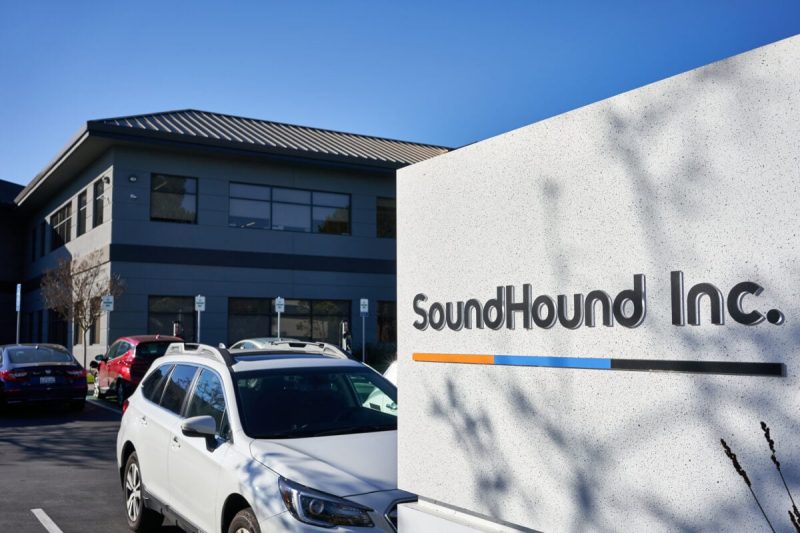Q2 2024 Losses: SoundHound AI Stock Update
According to Nvidia’s recent 13F filing, SoundHound AI stock (SOUN), one of the company’s holdings, fell 32% during the second quarter of 2024. Despite this decline, Nvidia maintained its stake in SoundHound AI, along with its positions in Arm Holdings, Nano X Imaging, and Recursion Pharmaceuticals.
By the end of the second quarter, Nvidia’s portfolio also included shares in Serve Robotics. While most of the company’s shareholdings have gained since the beginning of the year, the majority of stocks in Nvidia’s portfolio experienced losses in Q2 2024. Serve Robotics utilises robotics recursion to streamline automated operations, making it a significant player in the robotics industry.
Nvidia and most companies managing assets valued at $100 million or more must submit this form to the SEC quarterly, which discloses their equity holdings.
During the quarter, Nvidia obtained a stake in Serve Robotics, which started trading on the Nasdaq in April. At the same time, it kept the same number of shares in Arm, Nanox Imaging, SoundHound AI, and Recursion Pharmaceuticals.
Among Nvidia’s holdings, Arm was the only stock that saw growth, with shares increasing by roughly 30%. In contrast, Recursion Pharmaceuticals and Nanox Imaging service lost nearly 25%, while Serve Robotics shares decreased by approximately half compared to their Initial Public Offering price.
With a market value of over $320 million as of the end of June, Nvidia’s Arm shares are by far the most valued stock investment in the company’s portfolio.
Despite the Q2 decline, SoundHound AI’s stock rebounded, fueled by a major acquisition and strong revenue growth in its latest earnings report.
SoundHound AI’s Stocks Surge Due to Robust Revenue Growth
After the company announced a significant deal and strong revenue growth for the second quarter, SoundHound AI stock was up last week.
Despite SoundHound’s impressive Q2 results, the company’s recent investment overshadowed the earnings news. SoundHound announced it would acquire the enterprise AI software company Amelia for $80 million in cash and stock.
Additionally, Amelia’s debt will be assumed, and future earn-outs are contingent upon meeting specific revenue targets.
Amelia has earned renown for its interactional and generative artificial intelligence platform, which streamlines back-office operations, employee onboarding, and customer support. The acquisition will enable SoundHound to enter new market verticals, including financial firms, retail, insurance, and healthcare.
According to the company, the agreement will also open numerous opportunities for upselling, cross-selling, and new revenue streams.
The combined business should bring in over $150 million in revenue the following year. Amelia accounts for more than $45 million of that amount. After the deal, its balance sheet will show $39 million in debt and $160 million in cash.
SOUN/USD 5-Day Chart
SoundHound Earnings
SoundHound’s Q2 revenue earnings reached $13.5 million, a 54% increase year over year. Nevertheless, the business keeps losing money. The company’s adjusted EBITDA loss increased to $13.8 million from $10.1 million. Its adjusted loss per share was $0.04, an improvement over the previous year’s $0.07 loss per share.
In contrast, its accumulated subscriptions and reservations backlog nearly doubled to $723 million in the past year. Contractually guaranteed net income is expected to be known in the upcoming years.
The business kept growing in its two primary verticals: restaurants and automobiles. Regarding the automotive sector, Stellantis reported that five of its new brands with AI voice assistant service have entered full production.
Overall, six of Stellantis’s fourteen brands currently carry it. Additionally, according to SoundHound, a nameless American EV manufacturer plans to start producing its AI voice assistant soon for all its models. It also deepened a partnership with an EU EV manufacturer.
Two coffee chains have incorporated its employee assistance solution. Additionally, the restaurant division signed a deal with one of the largest pizza chains in the world for its phone ordering services. Meanwhile, Beef ‘O’ Brady’s, a sports pub with around 140 locations across 21 states, has implemented SoundHound’s AI voice-ordering process in all its eateries.
The company now projects its total revenue in 2024 to be $80 million. Additionally, with a spike above $150 million the following year.
Should You Buy SoundHound AI Stock?
This year has been an incredible ride for SoundHound shares. After initially skyrocketing following the announcement that Nvidia had acquired a stake in the business, they began to decline. The stock lost over half its value after quadrupling in less than three months. However, it has increased by more than 140% year to date.
The business has a sizable backlog and has successfully closed deals in its primary automotive vertical. It keeps making a name in the food business in the interim. After acquiring Amelia, it will now try to expand its technology’s application into other verticals. This is because its AI voice technology can be effectively utilised for employee assistance and customer service, as proven in the restaurant sector.
SoundHound is currently trading at a front price-to-sales (P/S) ratio of almost 16 times 2025 analyst estimates, which does not yet account for Amelia’s contribution. The combined company’s management has projected that multiple will drop closer to 12 times by 2025.
The fact that SoundHound is procuring Amelia for less than twice the following year’s revenue is noteworthy and illustrates the high value of SoundHound AI stock. Although SoundHound still has much potential, its value and short track record make it extremely speculative.
Other Nvidia Portfolio Stock Performance
Recursion Pharmaceuticals
On August 8, Recursion Pharmaceuticals and Exscientia announced their intention to combine into a single company. This merger will create the largest biotech company in the world focused on using artificial intelligence to drive drug discovery. It is anticipated that the deal will close in early 2025. Furthermore, the bull theory for Recursion’s shares has strengthened since then.
They will now benefit from each other’s supporters. Both rely heavily on their partners to pay milestone fees that help cover research and development costs. These partners include leading global pharmaceutical companies such as Bayer, Bristol Myers Squibb, Sanofi, and Roche. Nvidia, the industry leader in AI hardware, is also a key partner.
The importance of such a wide-ranging coalition of allies in information technology and medical systems cannot be overstated. If clinical trials face setbacks, it’s unlikely that the drug candidates will endure.
Combining the pipelines of the two biotech companies could increase shareholder value and strengthen the balance sheet each time positive clinical trial results are released. The management estimates that during the next 18 months, the two can anticipate up to 10 readouts.
Now that four programs are in phase 2 clinical trials, Recursion may only have to try to bring something to market for a few years. Crucially, the combination will produce a well-capitalised company that won’t require a long new debt or share issuance period.
The new company will have approximately $850 million in cash, equivalents, and short-term investments on top of the projected $100 million in cost synergies. Therefore, It is scheduled for cash at least the beginning of 2027.
Nano-X Imaging
Though it doesn’t happen frequently, radiological innovations frequently signify a paradigm shift. And that’s precisely what Nano-X Imaging serves to achieve.
Nanox’s ARC is a groundbreaking X-ray device that is simpler, more compact, and less expensive compared to conventional X-ray machines.
Although the ARC system has developed more slowly than management had anticipated, the company is making headway and plans to deploy devices in five states by 2023. Because of AI, Nanox offers solutions for analysing patient scan data. Called Nanox.
AI, the company’s FDA-approved AI solutions, assists in identifying patients who may be at risk for several conditions, such as fatty liver, musculoskeletal disorders, and coronary artery disease.
Second Quarter 2024 Financial Highlights
In the second quarter of 2024, revenue increased by 17% yearly to $664 million, or 23% on a currency basis. This growth was driven by revenue in all segments.
Underpinned by increases in average user frequency and total transactions, On-Demand GMV expanded by 18% YoY or 13% YoY on a steady currency basis. On-demand MTUs saw YoY growth of 19%.
Incentives for the Q2 2024 totalled $452 million, with the On-Demand segments accounting for most of the incentives. As a percentage of On-Demand GMV, On-Demand incentives decreased to 10.1% in the 2nd quarter from 10.5% in the corresponding period of 2023. This decrease indicates our objective to lower our service cost while enhancing the state of our marketplace.
The second quarter’s operating loss of $56 million represented a YoY improvement of $121 million, mostly due to higher income and lesser restructuring costs.
The company reduced its quarterly loss to $68 million, a $79 million YoY improvement driven primarily by a rise in Group Adjusted EBITDA, with only a slight offset from higher income tax expenses. Our loss for the quarter included non-cash share-based recompense costs totalling $82 million.
In conclusion, in 2024, the company SoundHound AI stock has increased despite the market’s volatility. The company is highly ranked due to its long-term growth and expansion into new market verticals. With strong revenue, it’s one to watch in 2024!
The post SoundHound AI Stock Drops: Q2 2024 Nvidia Portfolio Update appeared first on FinanceBrokerage.


